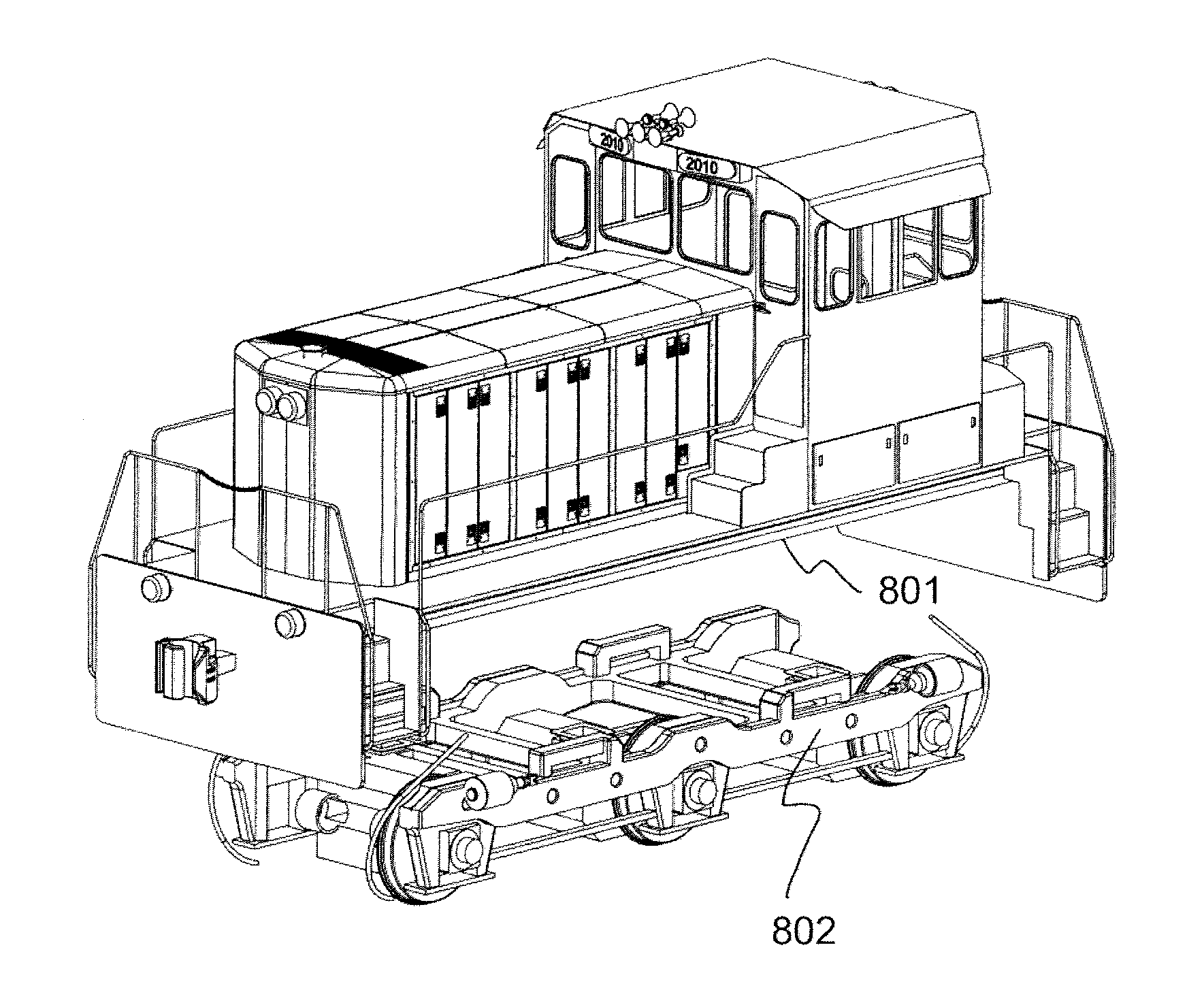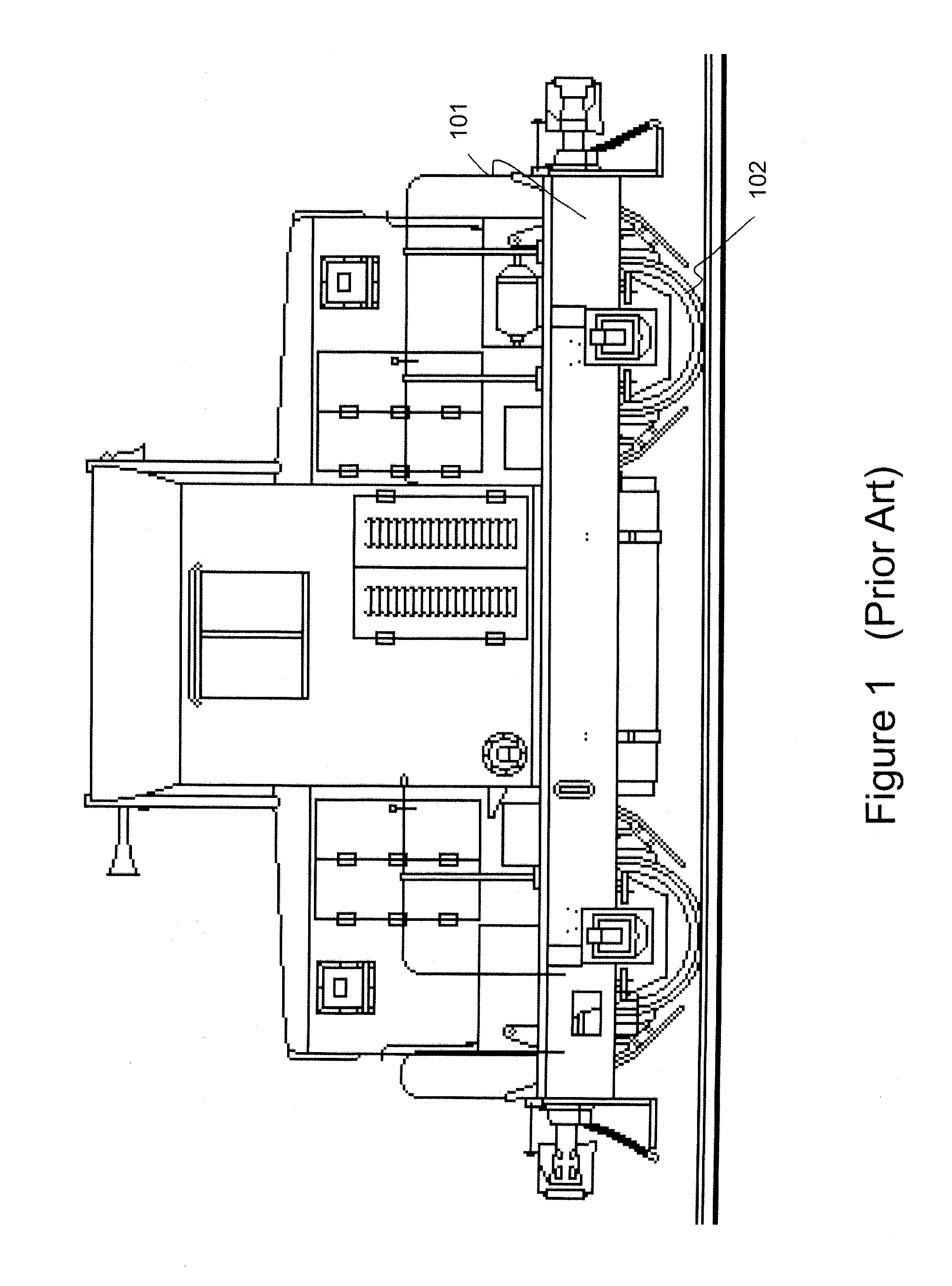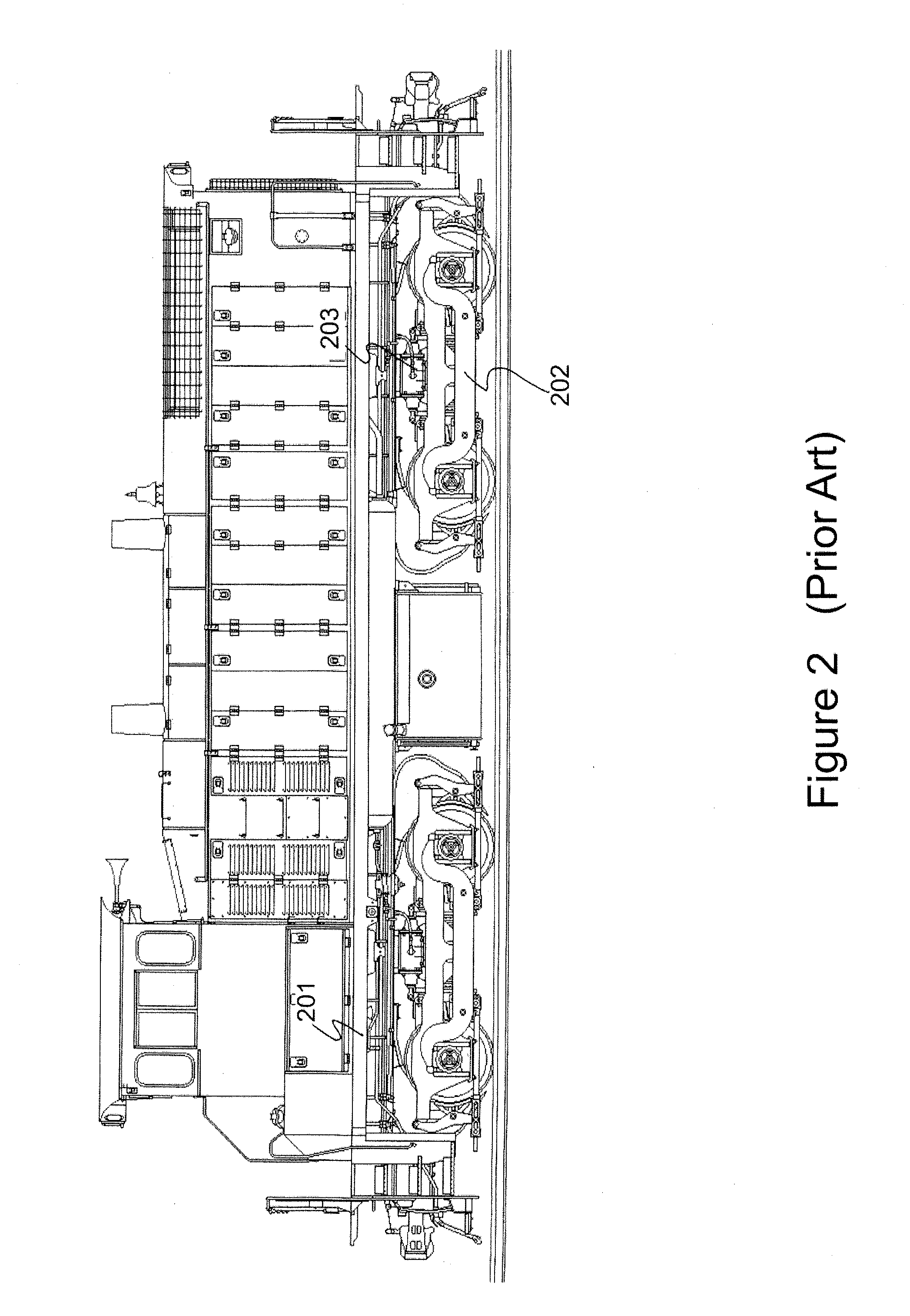Industrial locomotive construction
a technology of industrial locomotives and construction methods, applied in the direction of locomotives, climate sustainability, railway energy recovery technologies, etc., can solve the problems of limited suspension to absorb shocks, the ability of the wheel and axle assemblies 102 to swivel, etc., and achieve the effect of low cost of ownership and less mobility
- Summary
- Abstract
- Description
- Claims
- Application Information
AI Technical Summary
Benefits of technology
Problems solved by technology
Method used
Image
Examples
Embodiment Construction
Prior Art
[0063]FIG. 1 shows a typical prior art small industrial locomotive without a truck. The wheel and axle assemblies 102 are typically attached directly to the frame 101 of the locomotive. Thus, there is no ability of the wheel and axle assemblies 102 to swivel when the locomotive negotiates a curve. There is also limited suspension to absorb shocks from bumps or deviations of the rails. Since these locomotives are usually operated at low speeds, the limited suspension system is not a major liability. Small industrial locomotives, not counting used switcher or line-haul locomotives, typically have two to four axles and a rated horsepower in the range of approximately 200 HP to about 600 HP.
[0064]FIG. 2 shows a typical prior art switcher locomotive illustrating a pair of two-axle truck assemblies 202 attached to the locomotive car frame 201 by bolsters 203. The bolsters 203 allow the trucks to swivel as the locomotive negotiates a curve. The switcher typically has a traction mo...
PUM
| Property | Measurement | Unit |
|---|---|---|
| weight | aaaaa | aaaaa |
| weight | aaaaa | aaaaa |
| length | aaaaa | aaaaa |
Abstract
Description
Claims
Application Information
 Login to View More
Login to View More - R&D
- Intellectual Property
- Life Sciences
- Materials
- Tech Scout
- Unparalleled Data Quality
- Higher Quality Content
- 60% Fewer Hallucinations
Browse by: Latest US Patents, China's latest patents, Technical Efficacy Thesaurus, Application Domain, Technology Topic, Popular Technical Reports.
© 2025 PatSnap. All rights reserved.Legal|Privacy policy|Modern Slavery Act Transparency Statement|Sitemap|About US| Contact US: help@patsnap.com



